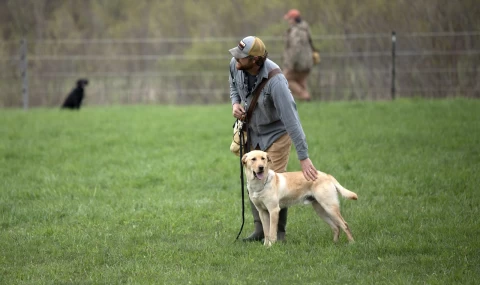Beyond Daily Yonder: Insights and Updates
Exploring daily news and insightful information from various fields.
Train Your Dog or He'll Train You: The Hilarious Truth About Obedience
Discover the hilarious truth about dog obedience—train your pup or risk becoming their pet! Click for laughs and expert tips!
5 Essential Commands Every Dog Should Know to Avoid Being Trained by Them
Training your dog is not just about teaching them tricks; it's about establishing a foundation for good behavior and safety. One of the 5 essential commands every dog should know is 'Sit'. This command is fundamental because it teaches your dog to remain calm and can help prevent jumping or other unwanted behaviors. Start by holding a treat above your dog's head and moving it back slightly. As they look up, their bottom will naturally lower to the ground, allowing you to reward them and reinforce the command.
Another vital command is 'Stay'. This command helps keep your dog in a fixed position until you release them, which is crucial for ensuring their safety in potentially dangerous situations. To teach this command, ask your dog to sit and then take a step back. If they remain in place, return to them and reward them. Gradually increase the distance and duration, reinforcing that they should remain still. These two commands, along with the rest of the essential commands in this list, will make sure you're training your dog rather than the other way around.

The Comedy of Errors: Common Mistakes Dog Owners Make That Turn Their Pets into Comedians
The Comedy of Errors in dog ownership often arises from innocent mistakes that can turn our beloved pets into unexpected comedians. One common blunder is failing to properly socialize a dog during its early developmental stages. Without exposure to various environments, people, and other animals, dogs may develop quirky, comical behaviors when faced with the unfamiliar. For instance, a dog that has never met a cat might leap into the air or perform a nervous dance when encountering one, making it appear more like a clumsy performer than a typical pet. Understanding the importance of early socialization can prevent these hilarious yet embarrassing moments from becoming the main act in your household.
Another frequent misstep occurs when owners inadvertently encourage bad behavior by laughing at their dog's antics. Many pet owners find it amusing when their pup steals a sock or clumsily chases its tail, but laughing can signal to the dog that these behaviors are acceptable. This can lead to a routine of slapstick antics, turning your pet into a resident comedian. Instead, redirecting the behavior and rewarding desirable actions can help ensure that your dog develops into a well-behaved companion rather than the star of an ongoing comedy show. By recognizing and correcting these simple errors, we can promote a happier and more harmonious relationship with our furry friends.
Why Consistency is Key: How Mixed Signals Can Lead to a Dog Training Fiasco
When it comes to dog training, consistency is paramount. A dog relies heavily on the cues it receives from its owner, and when these cues are mixed, confusion ensues. For instance, if you allow your dog to jump on you one day but scold it for the same behavior the next day, your furry friend is likely at a loss. This inconsistent approach can lead to a series of behavioral issues that can be difficult to rectify. To cultivate a well-behaved pet, it is essential to establish clear, consistent rules and stick to them unwaveringly.
Moreover, mixed signals during training sessions can result in a complete fiasco. For example, if one member of the household encourages a behavior while another corrects it, the dog will become confused and anxious. This lack of cohesive communication not only frustrates the owner but can also undermine the dog's trust in them. To prevent a chaotic training experience, all family members must agree on commands and rules, creating a unified front. In this way, maintaining consistency transforms potential training disasters into a positive bonding experience.